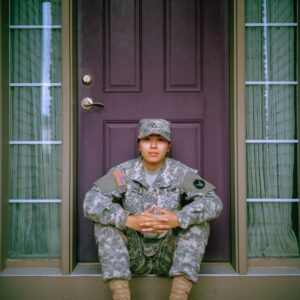
What’s Code-Switching?
Code-switching is behaving differently in different situations. We all do it to some extent. For example, are there words, jokes, and inside references that you use with your friends, but don’t with your parents or teachers?
It’s not that any of those jokes or references are necessarily inappropriate. They’re just part of one social circle, and not another. To participate fully in a social group, we learn and try to use its code of behaviors.
When academics and journalists talk about code-switching, they usually mean the use of different words to communicate membership in a social group or community.
Visual Code Switching
Code-switching is just adopting one set of behaviors over another. Why not include more visual elements into that definition as well? Sure, the term usually describes switching of patterns of words. There are two good reasons I think we can include something more visual, which is fashion, in the definition as well.
The first is that code-switching is a choice. This choice is probably unconscious most of the time: we get so used to it that we just do it. But that doesn’t take away from the fact that it is still a choice to code-switch. That’s also true of fashion: we choose to put on one outfit over another.
The second reason is that code-switching is about how we are perceived by others when we communicate with them. When we talk, those words have meanings that other people understand and think about. Before we even speak, people can usually see our clothes, and those clothes communicate something about us as well.
Because we choose clothes, and they communicate about us, I think it makes a lot of sense to consider them as code-switching as well. Let’s look at some examples.
Historical Examples
Take an average guy, in jeans and a t-shirt. Aside from the fit, you might have a hard time telling what decade the picture is from, let alone much of anything else about him. That’s not always the case, and some outfits we put on say a lot about us to the world.
A military uniform is a great example of what I mean.
If you take a look at the picture at the bottom, it’s pretty clear to anyone looking that he is, or is at least dressed up as a member of the military. We don’t know anything else about her, but that alone might lend some authority if, for example, it’s after a disaster and she’s blocking off a road and telling us to drive around.
Another example in the same vein is a prison uniform. If you saw someone wearing that outfit on the side of the road, I don’t think you’d be taking their directions in the same way as you would from someone in an army uniform.
The point is that you could take the same everyday person, and dress them up in one of these two outfits, and you’d treat them differently without consciously thinking about it.


Examples from Today
Those examples are both extreme to prove a point: most of us are not in the military walking around in uniform, or prison at the second.
But, we can still code-switch in meaningful ways with the clothes that we wear on an everyday basis. How we choose to do so can say a lot about us, whether we want it to or not.
For example, there are the famous MAGA hats that Trump’s supporters have been wearing since about 2016. (I won’t be linking to an image to one to drive their sales, and MAGA types LOVE to sue people for no good reason). With that red hat, and usually no mask, I assume I don’t want to get to know the dude in front of me in line at the grocery store.
Another example, often found in streetwear, are designer T-shirts like this one from Fendi. That shirt, which cost more than my best suit, wouldn’t say much, for example, to my parents. They’re just not into current fashion and wouldn’t notice. But to those in the know, it communicates that that person is willing to drop the cash to be a part of the streetwear or luxury scenes. Again, the clothes are communicating before the person even talks.

What Can You Do With This Information?
I’d like to finish this with a story. About a year ago, I was looking for a new car. I’d been on my current lease for three years, which was going to end soon, so, after some looking online, I went to the closest Dodge dealer in the middle of the day on a weekday.
The first time, I parked in the back by the service area to say hello to the techs who’d been working on my years. Then, in a nice pair of medium wash jeans and a black t-shirt, I walked up to my dream car, a 2020 Challenger Hellcat Widebody. Now, I can’t afford THAT car, but as a muscle car enthusiast, I knew enough about it to appreciate what I was looking at.
After about fifteen minutes of walking around, including finding the car I was there to see, a 2020 Scat Pack Widebody, I had not been approached by a single sales representative. On the way out, I asked one of the techs where everybody was, and he said they were around. Guess they just didn’t notice me.
A week later, I came in again. Only, this time, I was on my way home from teaching. As soon as I walked in the door, this time wearing chinos, a denim button-down, a knit tie, and a Seiko 5 diver, the sales manager came over right away and asked if I needed anything. About two minutes later we were in his office talking quarter-mile times over a soda and discussing what we could do to get me that Scat Pack.
I was the same person, with the same knowledge, and putting on a little more “professional” outfit got me in the room with the sales manager. You, too, can use clothes to code-switch and communicate to people what you might want, or be capable of, in a given situation.
Give it a try the next time you go somewhere where you’ve dressed casually in the past. Just pop on a button-down shirt, and see if people think you’re communicating differently.
